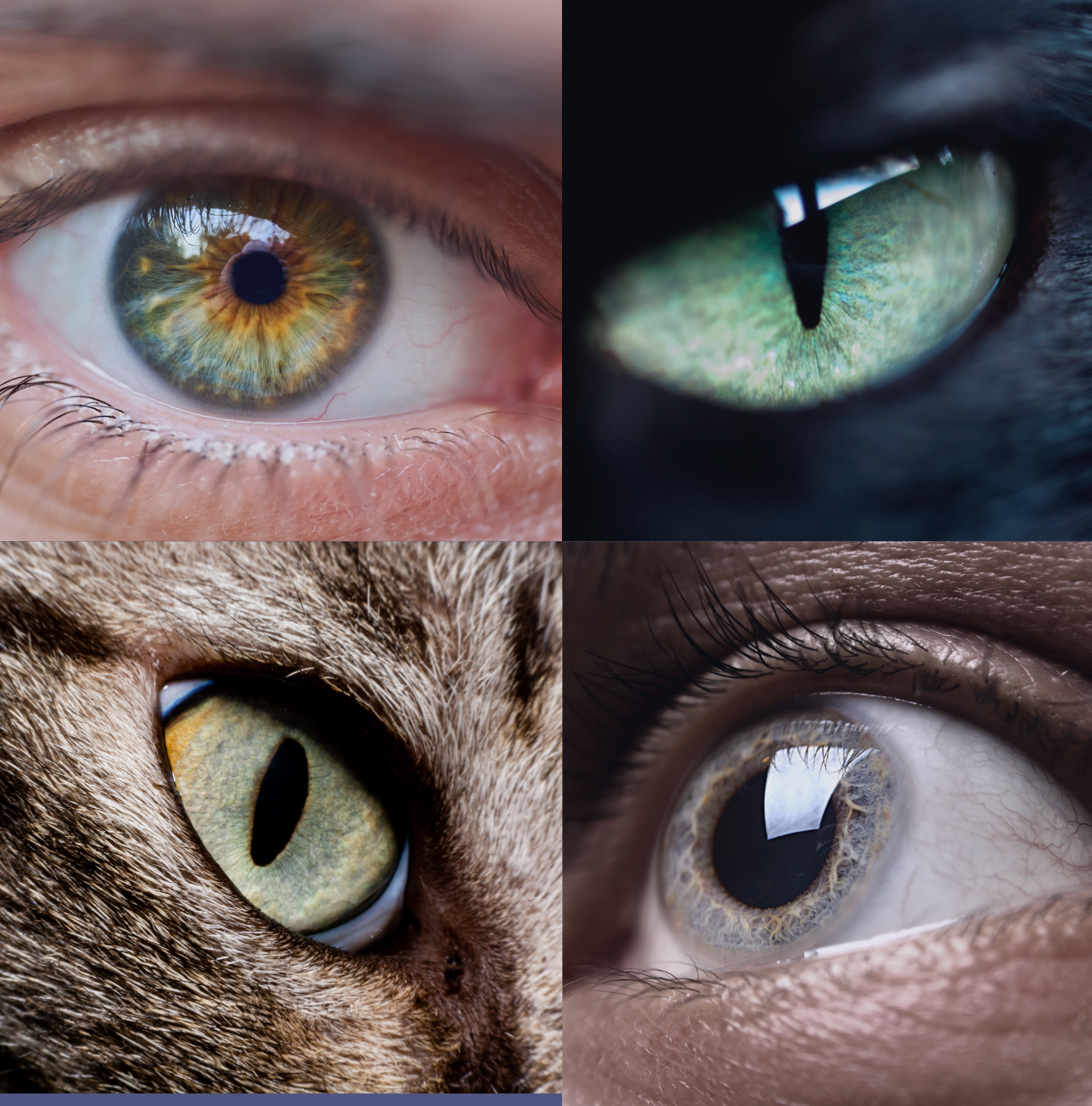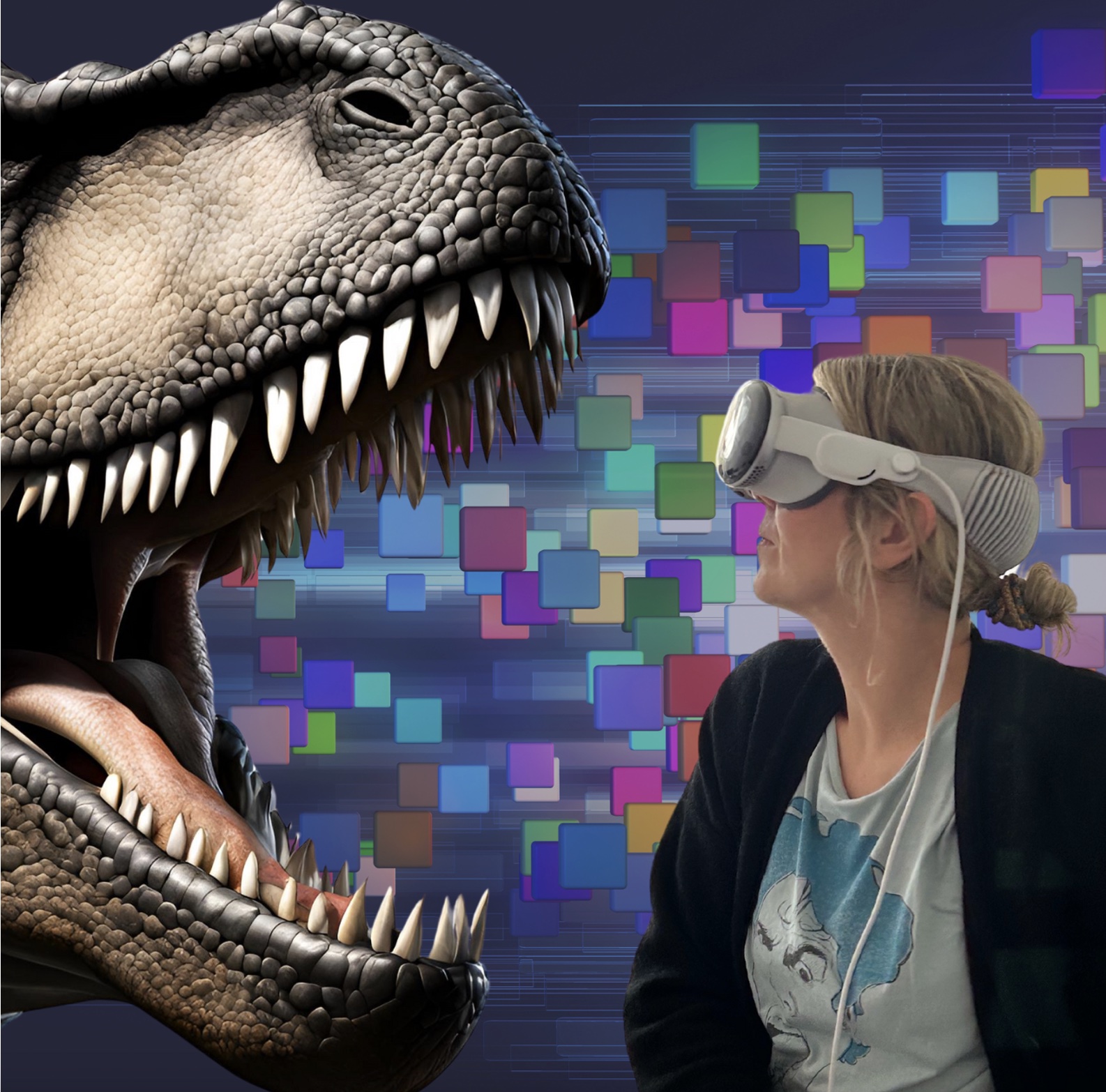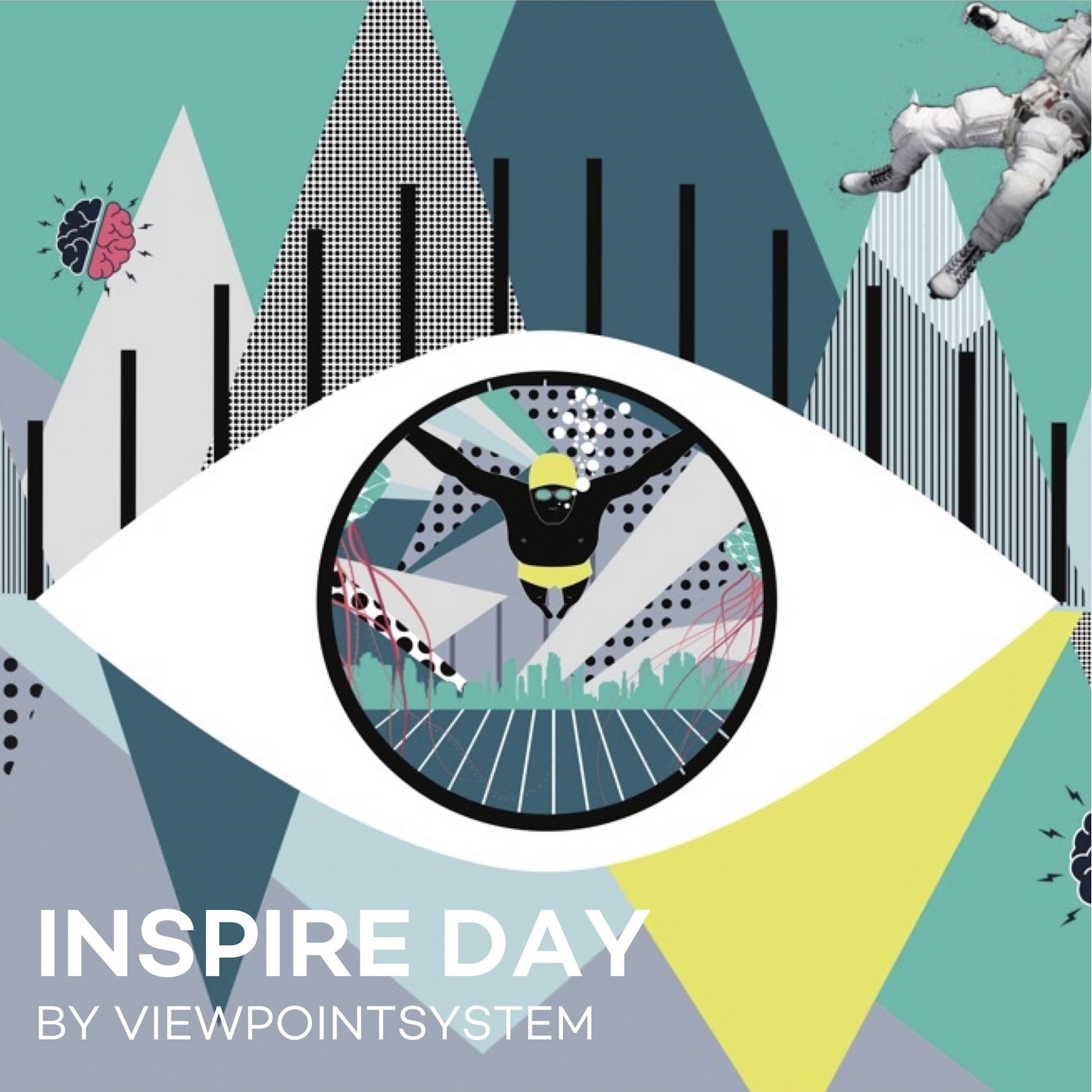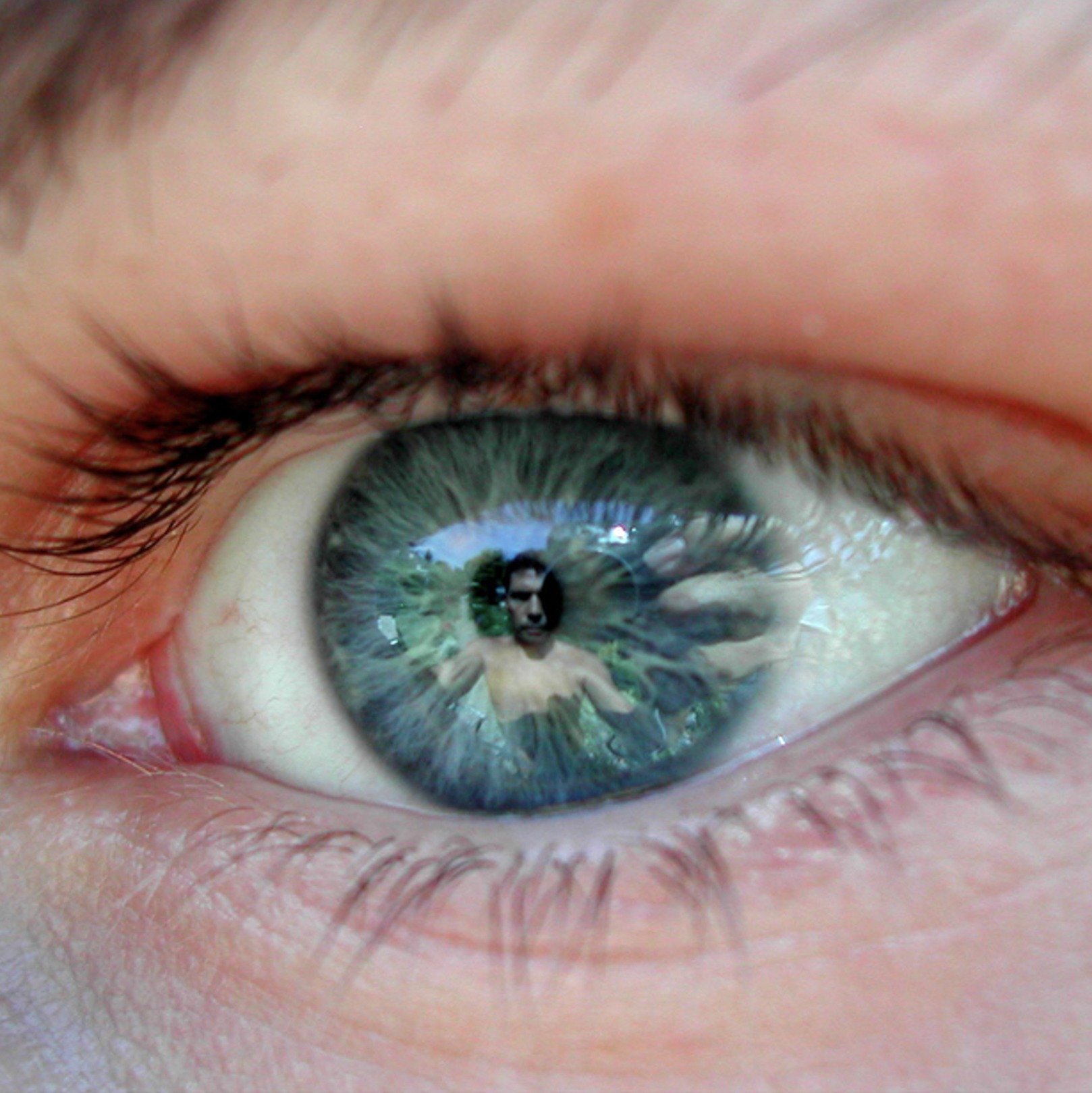Whether in the industrial sector, logistics, healthcare or sports – smart glasses are increasingly being used in more areas, and are finding their way into the everyday working environment. They promise greater efficiency, increased safety and new opportunities for training and education. However, anyone looking for the “right” type of smart glasses can quickly end up in a technological maze. AR, VR, Seethrough, Passthrough, AI, Eye Tracking – the terminology can be confusing, the variety of models sometimes overwhelming.
The choice on suitable glasses is not just in the technical details. It also determines whether a system can be used productively, if it ends up in a drawer – or even becomes a safety risk. Particularly in dynamic and mobile environments, where people have to move around and access information at the same time, the right features are crucial.
This article helps navigate the tech jungle: It introduces the most important types of smart glasses and describes which technologies are best suitable for different application scenarios.
WHAT TYPES OF SMART GLASSES ARE OUT THERE?
Smart glasses come in a wide range of technical variations – and that’s often the first challenge for companies. Terms such as AR, VR or AI glasses refer to very different concepts, each with specific strengths and weaknesses. To make things more confusing, these terms are not always used consistently across the board. A clear overview of the main types provides the necessary orientation.
Augmented Reality (AR) Glasses: Digital information in one’s field of vision
AR glasses expand the real-life field of view with additional digital content – for example by displaying text, symbols or 3D objects in front of the eye. There are two main technological variants, Seethrough AR and Passthrough AR:
- Seethrough AR (optically transparent AR): With this technology, users see their real environment through transparent glasses or lenses, onto which digital content is projected – for example step-by-step instructions, navigation indicators or sensor data. Seethrough AR typically has a lighter form factor than passthrough AR (see below) and enables easier perception of the surrounding environment. This leads to greater safety in mobility, as well as higher social acceptance. Disadvantages include blurred and low-contrast images – especially in bright ambient lighting.
Within the realm of Seethrough AR, there are two types of glasses to differentiate between:
- Flat AR (also known as “Lite AR”): Shows simple, mostly static overlays (e.g. notifications, work instructions, checklists), or virtually beams the screen of a complementary device into the room. The usage scenario of this merely rudimentary augmented reality without spatial tracking, is focused and straightforward. Advantage: slim design, low energy consumption. Devices are available from manufactures such as Xreal and Vuzix.
- Dimensional AR (Spatial AR): Provides interactive, spatially anchored, visual content with environment recognition (SLAM: Simultaneous Localization And Mapping). This “true” AR is technologically challenging and highly computing-intensive, requiring advanced sensors and often resulting in larger, heavier devices – such as Microsoft HoloLens or Magic Leap. Both have largely failed in the consumer market and have since pulled back from enterprise applications as well. Newer models from Snap and Meta show promise, but are either not suited for professional use or not yet market-ready. Dimensional AR is considered to be the most technologically demanding, but also the most forward-looking area – almost all major tech players are actively developing in this field. However, market-ready solutions will be a long time coming.
- Passthrough AR (camera-based AR): In this case, the environment is captured by cameras and immediately transmitted as a live video feed to an internal display. Unlike Seethrough AR, the user sees reality as a reconstruction rather than directly. Digital content is then embedded into this “video reality” – with high precision and visual quality. This method enables impressive immersive effects. Passthrough AR is based on the same construction principle as VR glasses, which simplifies production and reduces costs as it is already a more widely established technology.
The downside: high computing power is required, leading to correspondingly bulky devices (not to be confused with conventional glasses), limited wearing comfort, social isolation due to visual isolation, and confined use to static scenarios. Examples: Meta Quest 3, Apple Vision Pro (VR also possible).
Passthrough AR and Dimensional AR are sometimes also referred to as “Mixed Reality” due to the greater interpenetration of digital and physical reality compared to simple Augmented Reality.
Virtual reality headsets (VR): Completely virtual worlds
VR headsets are designed to be closed off to real-life visual perception, and create a completely virtual environment. They are suitable for training, simulations or design applications in static situations – e.g. in a seated position or within secure training rooms for a very limited period of time. Their strength lies in their immersive presentation and variety of interactions. Weaknesses: complete exclusion from real environment, size and weight of the devices, very limited suitability for dynamic work contexts. Available from manufacturers such as HTC, Varjo, Pico (some also include passthrough mode).
AI glasses: smart assistant without a display, for everyday use
AI glasses are smart glasses without a display, offering simple assistance functions with the help of voice control, camera, microphone and AI. They enable hands-free communication, image capturing, recording and – depending on the model and region – AI-supported interactions such as object and environment recognition as well as voice dialog (“What am I looking at?”).
Their focus is on suitability for everyday implementation as well as easy and discreet use, not on immersive presentation. Examples: Ray-Ban Meta Smart Glasses, Solos.
Eye tracking: gaze detection as a key technology
Eye-tracking glasses capture the wearer’s eye movements, allowing for the recognition and analysis of their visual focus and attention in specific situations. Unlike AR glasses, no digital overlays are projected into the user’s field of view – —overlays that can distract from the real environment in certain situations. Instead, the wearer’s field of vision, gaze point, and gaze patterns are displayed on the screen of a connected device.
The VPS Smart Glasses also offer live streaming and real-time communication, which makes them particularly valuable for education and training — for example, for pilots, train operators, security personnel, or medical professionals — as well as for remote support in industrial settings. They are lightweight, robust, and certified as safety glasses.
Eye tracking is also an important key technology for the upcoming generation of AR glasses. It not only enables easy, touchless operation through the eyes (current example: Apple Vision Pro), but also provides valuable data on attention, behavior and context. With this, AR can be tailored to the specific needs of users and made more intuitive and natural overall.
Assisted reality: information instead of immersion
Assisted reality devices display information at the edge of one’s field of vision, but unlike AR glasses, there is no overlay of the real world and no spatial anchoring of content. The data is usually shown on a small side-mounted display that can be moved into the field of vision – similar to a mini tablet in front of the eye. Available from manufacturers such as RealWear or Epson.
Special-purpose smart glasses: developed for special requirements
In addition to the above mentioned product categories, there are also highly specialized smart glasses catering to special requirements, e.g. in research or medical applications. These devices are often customized, have special sensor technology or are designed for extreme environments. One example is the military version of the HoloLens (IVAS) for the US Army, with advanced sensors and night vision.
REALITY CHECK: WHICH GLASSES ARE SUITABLE FOR WHICH USE?
Many smart glasses come with impressive features – but not every model is suitable for every use. Choosing the right device depends not only on the technology but, above all, on the specific context of use:
- Is the user in motion – or working while seated?
- Is the environment dynamic and unpredictable – or controlled and static?
These two questions already help to narrow down the possibilities significantly. While a closed VR headset is suitable for seated training, it becomes a source of danger in a dynamic environment, due to complete blockage of the field of vision.
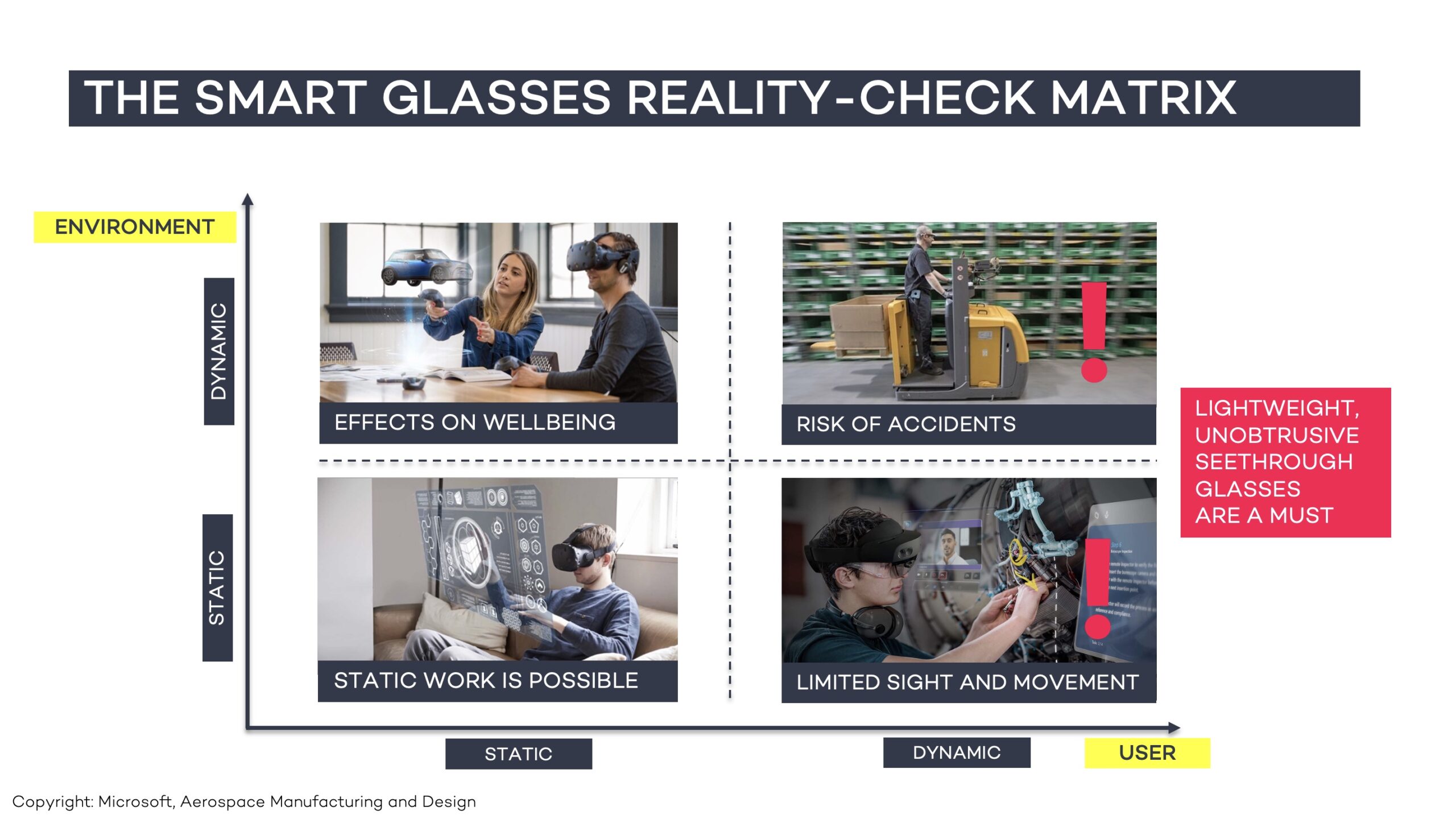
An often underestimated aspect of using VR or passthrough AR glasses, even in static applications, is the risk of motion sickness, also known as cybersickness. This form of discomfort occurs when the visual system suggests movement that is not confirmed by the vestibular system (sense of balance) or vice versa. Typical symptoms: dizziness, nausea, disorientation.
It becomes particularly critical when users move around physically (e.g. standing, walking, turning) but the visual system – due to minimal delays or artificial perspectives – does not fully follow suit. With Passthrough AR, the position of the cameras does not correspond exactly with the natural position of the eyes, which causes perspective shifts and discomfort for the wearer. If the wearer moves their head quickly, latencies and time delays in the image can occur. The result: a sensory conflict that can often lead to severe strain after just a short period of wear.
What’s more, even during slight movement or simple activities, Passthrough AR can cause the wearer to feel a lack of security or a sense of disconnect to their actual environment, because ultimately, they are not seeing the real environment directly, only a filmed version of it.
WHAT DO SMART GLASSES REALLY NEED IN DYNAMIC FIELDS OF APPLICATIONS?
For true mobility and physically active work applications – for example in manufacturing, education and training in motion or in medical scenarios – the following factors are important:
- Unobstructed view of ones surroundings without visual restrictions
- Digital overlays must not block or delay vision
- Intuitive, hands-free controlling – e.g. via voice, gestures or eye tracking
- Robust, lightweight design that does not interfere with movements
- Fast access to information without visually or cognitively overloading the user
The reality check makes it clear: Choosing the right smart glasses is not about technical superlatives – it’s about whether the device can truly prove itself in real-world working conditions.Those who ask the right questions early on will save time, costs — and frustration.
CONCLUSION: SEEING CLEARLY THROUGH THE SMART GLASSES JUNGLE
Smart glasses offer enormous potential for professional environments – but not every model fits every application. The crucial question is not what is technologically possible, but what is practical and safe in the specific use context. Being able to differentiate between the various solutions lays the foundation for well-founded decisions.
A clear view, intuitive operation and minimal weight are particularly important in dynamic environments. Robust, practical systems connect to this – and make the difference between a technical gimmick and a productive tool.
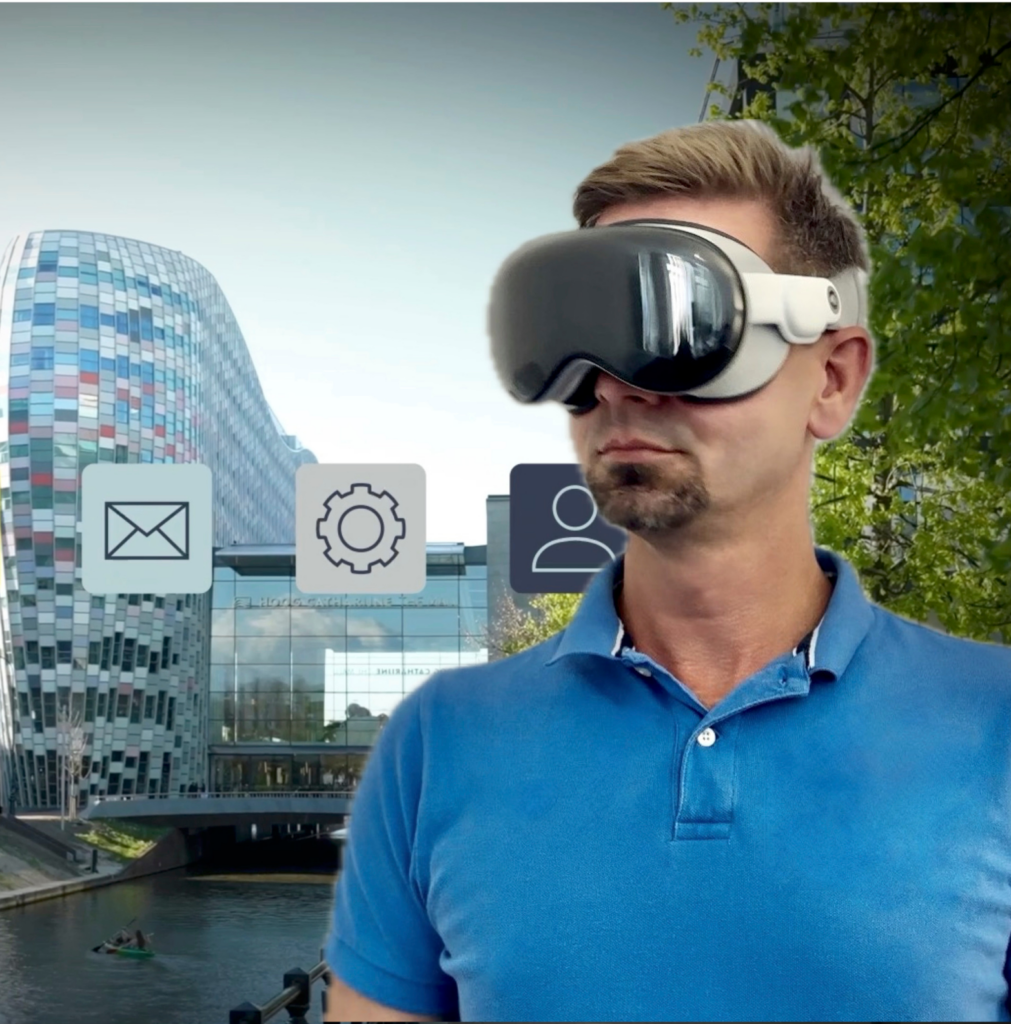
READING TIPP: AUGMENTED REALITY: HOW CLOSE IS THE BIG BREAKTHROUGH? A CONVERSATION WITH AR-PIONIER MARTIN HERDINA
https://viewpointsystem.com/en/augmented-reality-how-close-is-the-big-breakthrough/

